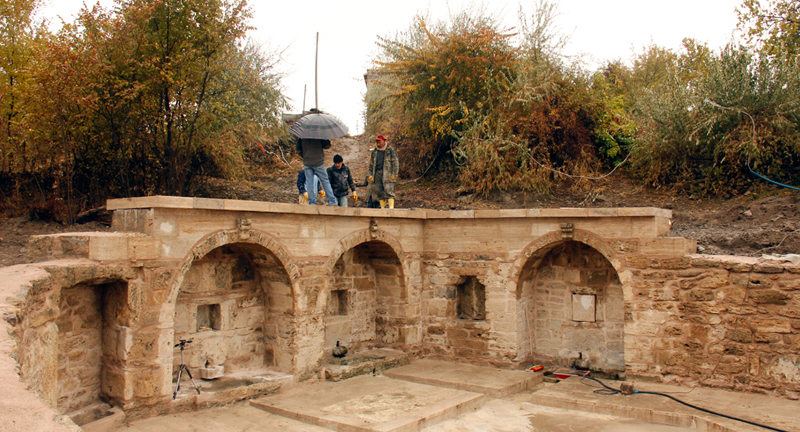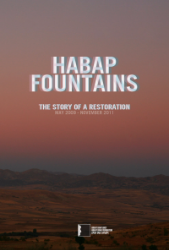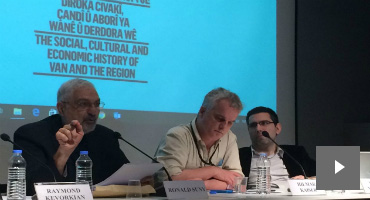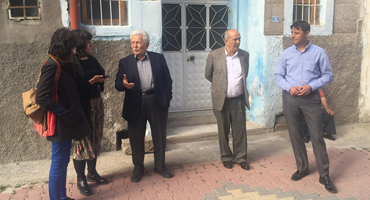The restoration of the two historic fountains in Ekinözü/Habap Village, in the Kovancılar district of Elazığ province, has been completed. This is the village in which Fethiye Çetin’s grandmother, whose story is told in her book “Anneannem” (My Grandmother), lived until she was 9 years old. The restored Habap Fountains each constitute a unique example of Anatolian and Armenian architecture of fountains with multi niches. With the wells and complicated water canals that were discovered during the excavation process of the restoration, the fountains carry the traces of a great culture to our day.
The opening ceremony organized on the occasion of the completion of the restoration of these valuable monuments, on Friday, November 25th, was attended by the Elazığ Provincial Administration Secretary General, Nazif Bilginoğlu, the Kovancılar District Governor, Selçuk Aslan, and the Kovancılar Mayor, Bekir Yanılmaz.
The volunteer architects Nihan Sağman, Mehmet Erkök and Savaş Ekinci, and art historian Özge Altınkaya Erkök designed the project following a field survey conducted between May and September, 2009.
The restitution and restoration projects, which were prepared later, were presented to the Diyarbakir Cultural and Natural Heritage Preservation Board. The Ministry of Culture and Tourism agreed to contribute to the restoration project, which had recieved approval from the board in April, 2010. The project was carried out between August and November, 2011, with the contributions of the Hrant Dink Foundation, the Chrest Foundation, the Open Society Foundation, General Energy and private donors.
The restoration had a transformative effect on those living in the village and on the volunteers who came to the village. The village youths took an active role in bringing a structure which represents the history of their locality back to its former state. Young volunteers coming from Turkey, Armenia, and some European countries gave support in the daily activities of the villagers. The volunteers who participated in the restoration project organized games, drawing and painting workshops, and discussion groups with the children and youth of the village.
Ekinözü Village, in the Kovancılar district of Elazığ province, whose old name was Habab or Hebap (Armenian: Havav), was a village of 500 homes during the Ottoman period. During the time that the village was inhabited by Armenians it had three churches, a monastery and two fountains. These were known as the Upper Fountain and the Lower Fountain. An inscription on the Upper Fountain in Armenian indicates the year 1634. With most of the structure being in ruins, the fountains had become unusable overtime. The fountains are still registered in the name of the Halil Beyler and Rufekası Beyler Foundation.
According to the sources; the water for the village came from a very cold spring which was strong enough to run a mill. The spring was two miles away from the entrance to the village in a wide valley. If the well where the water bubbled up was not cleaned every spring, the water of the spring would decrease. Because the well was filled with soil in the fall, the well would be cleaned every year after Easter. With the water from the spring a few mills were run and once a week the gardens and fields below the village were irrigated. The fountains were sacred for the villagers. There were two sweet water springs in the village. One was in the upper and one in the lower part of the village. The water for the fountains came a very long way through underground stone pipes and small cisterns. The cisterns could be reached via a gallery behind the fountains. They needed to be cleaned once a year. The water of these fountains was cool in summer and lukewarm and sweet in winter. The fountains and the surrounding floor were made out of cut stones.
Dikran S. Papazyan, Badmutyun Palu Havav Kyuği, [Palu Habap Village History] Beirut 1960.





